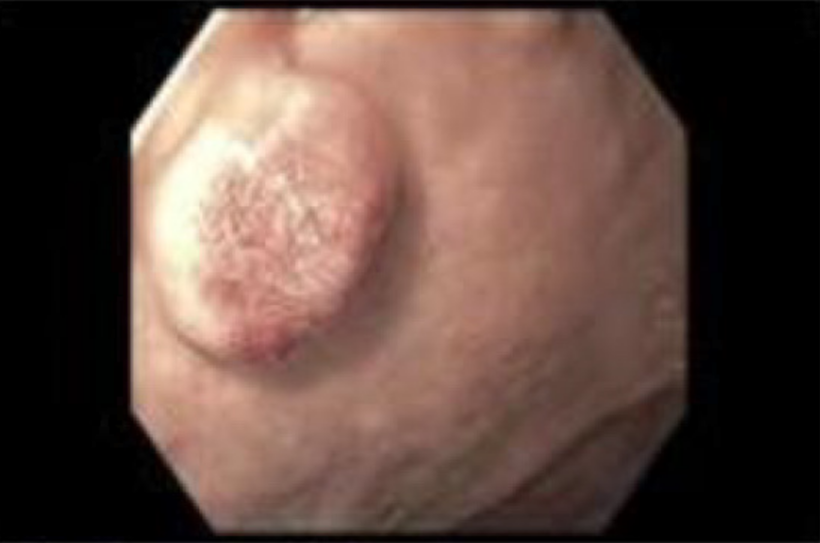Case Presentation: A 73-year-old man with hypertension, atrial fibrillation, coronary artery disease, heart failure, end stage renal disease on hemodialysis, and hypothyroidism presented with 3 weeks of nausea, vomiting, and inability to tolerate food. He had no fevers, abdominal pain, or diarrhea; symptoms did not improve with dialysis. Vitals were normal, abdominal exam was unremarkable, and he appeared euvolemic. Labs were remarkable for hemoglobin 10.9 g/dL which was at his baseline. Computed tomography (CT) showed cholelithiasis without cholecystitis. EGD revealed non-erosive gastritis, medium sized hiatal hernia, and a non obstructing nodule in the anterior bulb of the duodenum. Pathology revealed reactive gastropathy, minimal chronic inflammation, and negative H. pylori. Duodenal nodule biopsy later returned with tumor cells positive for synaptophysin and chromogranin, suggesting a well differentiated neuroendocrine tumor. Measured serum gastrin and chromogranin A levels were 56 pg/mL [0-115] and 1236 ng/mL [0-102], respectively. CT chest/abdomen/pelvis showed no metastatic disease. He was discharged after improvement with symptomatic management, and was scheduled for oncology follow up.
Discussion: Though rare, the incidence of DNETs has been markedly increased. At least 90% of DNETs are non-functional; however, they most commonly present with abdominal pain, GI bleeding, jaundice, vomiting, and diarrhea. Our patient’s symptoms were perhaps attributable to his DNET after thorough evaluation ruled out more common etiologies. However, because DNETs vary in nature and presentation, diagnosing the type of tumor is critical. EUS with cytology, helical CT, and somatostatin receptor scintigraphy (SRS) can help with staging. There is no consensus regarding the treatment of DNETs, which is largely based on tumor size, location, type and stage. Endoscopic resection is often considered for small non-functional DNETs. In patients with well-differentiated DNETs, 5-year survival rate is 80-85%. This case illustrates that DNETs should be kept in the differential when evaluating patients with intractable nausea and vomiting. Indeed, in such patients who have potentially explanatory findings such as gastritis, it is important to maintain a meticulous approach for full endoscopic evaluation, as this can help localize other concomitant pathologies.
Conclusions: We present a case of a DNET in a patient presenting with intractable nausea and vomiting. Duodenal neuroendocrine tumors (DNETs) are a rare gastrointestinal (GI) tumor and include hormonal and nonfunctional NETs. They account for roughly 5-8% of GI NETs, with an incidence of 0.19 per 100,000. Though rare, they can present with common symptoms and should be included in the differential when evaluating patients with nausea and vomiting, particularly in the absence of obstructive symptoms.

